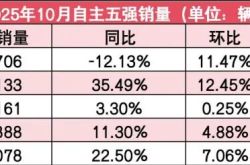Baidu Intelligent Cloud's Unrivaled Journey: A Decade of "Cloud Intelligence Integration" for Innovation and Leadership
![]() 08/29 2025
08/29 2025
![]() 567
567

By Wang Zi | Produced by JiXin
01 A Decade of Differentiation for Baidu Intelligent Cloud
A decade ago, the cloud served merely as a storage for websites and PPTs;
Today, it is a powerful engine running GPUs, calculating tokens, and boosting revenues.
Throughout these ten years, Baidu has steadfastly pursued one objective: differentiated competition.
In 2015, Baidu Intelligent Cloud was established. At that time, the cloud computing landscape revolved around resource virtualization and website hosting, with vendors boasting about scale, nodes, and bandwidth. However, Baidu envisioned the cloud not merely as a "computing" tool but as an instrument of "intelligence" from the outset.
This forward-thinking concept quietly laid the groundwork for Baidu's differentiated trajectory over the following decade.

Today, a decade later, with large models soaring and the industry collectively embracing the "AI+Cloud" narrative, Baidu Intelligent Cloud has seamlessly completed a "full-stack closed loop" layout: from the self-developed AI chip Kunlun Core, to the high-performance computing platform Baige, to the enterprise-level AI development platform Qianfan, and to the visual large model "Yijian" tailored for industrial scenarios, the technology chain is seamlessly interconnected and entirely under Baidu's control.
It does not strive for the flashiest single-point technical parameters but prioritizes system-level efficiency and ground-level usability. Facts bear this out: According to IDC data, Baidu Intelligent Cloud has ranked first in China's AI public cloud market for six consecutive years, serving over 65% of central enterprises, 80% of systemically important banks, and 95% of mainstream automakers.
These customers share a common trait: they are all deeply immersed in the digital and intelligent transformation journey, spanning industries with high barriers to entry and long cycles such as power grids, ports, steel, manufacturing, and finance. Baidu Intelligent Cloud's choice to dive into these depths signifies its commitment to presenting intelligent capabilities that can genuinely embed into production and be jointly built with customers over the long haul.
This explains its business logic. Baidu Intelligent Cloud does not pursue "showroom"-style flash projects but constructs operable, iterable, and measurable intelligent systems with customers. For instance, in collaboration with enterprises like the Beijing Humanoid Robot Innovation Center, China Iron and Steel Research Institute, and Ninebot, it focuses not on creating an impressive "AI demonstration" but on enabling AI to become an integral part of business operations and a true productivity tool.
In terms of business models, it also adopts a less flashy but more forward-thinking approach. While the industry still largely relies on renting and selling computing power, Baidu Intelligent Cloud is already promoting "Model as a Service (MaaS)" and "Result as a Service (RaaS)", billing based on token consumption, task complexity, and even business value.
It attempts to redefine the question of "how cloud should be sold" – the answer lies not in resources but in the tangible results created by intelligence.
Looking back at these ten years, Baidu Intelligent Cloud appears to have always been "half a step behind." It did not rush in when a trend was at its peak, nor is it adept at creating buzzwords. However, in hindsight, it often positions itself ahead of the technological inflection point. Precisely because of this, when the AI wave truly arrives, it exhibits remarkable composure.
No success is accidental, just as no cloud emerges without the accumulation of water vapor and the assistance of wind.
Over the past decade of cloud intelligence, Baidu has been walking a silent yet steadfast long-term path – intelligence is its original aspiration and ultimate destination.
02 Ecosystem as the Ship, Coexistence as the Sails – The Open Philosophy of Baidu Cloud Intelligence
This year's Baidu Cloud Intelligence Conference is no longer a solo technology showcase.
VAST, Liweike, Xinying Suixing, Geeling Shentong, Qianxun Intelligence – these names appearing alongside Baidu are not mere endorsements but a collective declaration of ecological will. From embodied intelligence to 3D generation, from AI glasses to game coaching, explorations in various forms are connected under a unified open framework.
Baidu Intelligent Cloud is using this conference to prove that in the true AI era, it does not belong to any solitary giant but to platforms willing to open up technical black boxes and dance with the ecosystem.
Baidu's Qianfan platform has transcended the conventional logic of "invoking large models" and evolved into a development environment that supports the collaboration of multiple models, tools, and agents. It not only integrates mainstream large models such as Wenxin, DeepSeek, and Moonshot but also connects ecological tools like Alipay and Tongcheng Travel through the MCP (Model Context Protocol), even allowing developers to directly publish their own MCP Servers.
This signifies that Qianfan is not merely a market but more like a "co-construction workshop": enterprises are both participants in the ecosystem and co-creators of rules. This "reversible openness" is rare among domestic cloud vendors.
Even more noteworthy is the depth of Baidu's collaboration with ecological partners.
In partnership with VAST, Baidu Intelligent Cloud provides not just computing power but a comprehensive suite of infrastructure support encompassing 3D data preprocessing, distributed training, and real-time rendering, enabling rapid generation of film-grade 3D content. In jointly creating AI glasses with Liweike, Baidu Intelligent Cloud contributes AI capabilities such as multimodal interaction, low-power voice wakeup, and real-time translation, allowing its 40-gram glasses to offer the experience of "shooting and speaking simultaneously, AI at hand." In Xinying Suixing's game coaching agent, Baidu Intelligent Cloud offers emotional computing, contextual memory, and dynamic decision-making frameworks, making AI partners not just mechanical Q&A machines but emotional, growing digital companions.
Behind these collaborations lies Baidu Intelligent Cloud's brand-new self-definition – it is no longer content with being a resource provider but is transforming into an ability amplifier and innovation accelerator.
As Shen Dou, Executive Vice President of Baidu Group and General Manager of Baidu Intelligent Cloud Business Group, stated, "What we provide is not solutions but the ability to solve problems." Behind this statement lies a mature ecological perspective: the platform should not replace partners in thinking but should empower them to better realize their own visions.
The results speak for themselves: this ecological strategy has already proven effective.
To date, the Qianfan platform has amassed 460,000 enterprise users, developed 1.3 million agents, and integrated over 1,000 tools and components.
More importantly, a group of AI-native enterprises like VAST, Xinying Suixing, and Liweike are swiftly navigating the treacherous terrain from technology to products with the help of Baidu Intelligent Cloud's platform capabilities, gaining recognition in both the capital market and the user market. This flywheel of "partner success – platform value-added" is quietly gaining momentum.
It can be said that the Baidu Cloud Intelligence Conference has long surpassed the traditional "launch event"; it is more like an ecological achievements parade and a collaborative innovation rehearsal.
As the Internet enters the AI era, closed systems are doomed to falter in the face of fragmented scenarios and diversified demands.
Baidu Intelligent Cloud appears to be opening up technology but is essentially building a symbiotic agent network – here, every enterprise can retain its core advantages while compensating for capability deficiencies through the platform, ultimately achieving value resonance.
Just as the prosperity of the rainforest does not hinge on a single towering tree but on diversity and symbiotic cycles, the future envisioned by Baidu Cloud Intelligence is precisely this ecological picture: the value of AI lies not in isolated technology but in maximizing potential through openness and connection.
03 Rooted in Industries, Creating Value – How Baidu Intelligent Cloud Becomes the "Answer-Level" Choice for Enterprises' Intelligent Transformation?
Today, amidst the cacophony and proliferation of AI concepts, the way enterprise customers pose questions has shifted. In the past, they inquired about "how many parameters the model has"; now, they are more concerned with "how much money it can help me earn," "whether it can reduce costs," and "whether it can give me a competitive edge." The reason why Baidu Intelligent Cloud has emerged as an "answer-level" choice lies precisely in its refusal to build a technological castle in the air but to insist on answering these most pragmatic questions at the front lines of industries.

For enterprises, Baidu Intelligent Cloud offers not just a technology stack but a new type of infrastructure for the intelligent economy.
It first addresses the issue of "affordability." Through deep optimization of the MOE architecture, long-context reasoning, and training-inference integration by the Baige AI computing platform, enterprises can achieve over 15% higher computing power cost-effectiveness than the industry average under the same budget. With the aid of over 150 selected models and the RFT model fine-tuning and enhancement tool chain on the Qianfan platform, enterprises can attain model effects that previously required tens of thousands of data points with just a few hundred samples – this efficiency boost directly translates into tangible cost savings.
More importantly, Baidu Intelligent Cloud helps enterprises transform AI from a "cost item" to a "revenue item."
In Ninebot's smart electric vehicle business, the multimodal RAG customer service system supported by Baidu Intelligent Cloud can not only comprehend users' text inquiries but also recognize uploaded fault images and dashboard codes, directly generating repair solutions in conjunction with real-time locations. This means that customer service evolves from "answering questions" to "solving problems," significantly enhancing customer satisfaction and repurchase rates. In the financial sector, the Qianfan Huijin model outperforms general models in scenarios such as investment advisors and marketing customer service, aiding banks in achieving personalized asset allocation in wealth management, thereby driving AUM growth. AI is no longer an external tool but a value engine embedded within the business closed loop.
At the level of security and compliance, Baidu Intelligent Cloud establishes an operating base that enterprises can confidently "use AI with peace of mind."
Whether it's full-link observability, multi-layer isolation strategies, or model filing and data encryption mechanisms, they all empower enterprises to migrate core businesses to the cloud with assurance. A technical leader from a state-owned bank bluntly stated: "We choose Baidu not because its model scores are a few tenths higher than others but because, from permission management to audit logs, they provide a comprehensive set of financial-grade security systems." This "trust value" is precisely the scarcest asset in the depths of AI implementation.
Simultaneously, Baidu Intelligent Cloud demonstrates remarkable adaptability.
For large central enterprises and state-owned enterprises, it can offer in-depth cooperation modes ranging from privatized deployment to joint operation, respecting data sovereignty and complex processes. For small and medium-sized enterprises and AI startups, it provides "pay-as-you-go, out-of-the-box" services through the MaaS model, significantly lowering the entry barrier. Whether it's VAST, which requires massive computing power for 3D large model generation, or Liweike, which produces consumer-grade AI glasses, they can all find the most suitable development path on the same platform.
From a broader perspective, Baidu Intelligent Cloud is actually assisting enterprises in coping with a fundamental transformation: the core of industry competition is shifting from "resource scale" to "intelligent efficiency." Enterprises are no longer content with "going to the cloud" but demand "using intelligence"; they are no longer pursuing "having or not having" but caring about "good or bad."
Against this backdrop, Baidu Intelligent Cloud's bottom-up full-stack capabilities – from chips to models, from development platforms to application components – appear particularly valuable.
It may never have been the most promotional cloud but the one that understands industries the best; it is not a geek blindly pursuing technical benchmarks but a partner always focused on user value. This pragmatic philosophy of rooting in reality, solving problems, and creating value may be the deepest inspiration Baidu Intelligent Cloud leaves for the industry.
Ten years of cloud intelligence mark Baidu's long-term, silent yet profound journey.
From 2015 to 2025, market debates have evolved from "whether to go to the cloud" to "whether to use the cloud effectively."
And Baidu has spent ten years answering: leave the complexity to us and give simplicity to users.
Without fanfare, there is still impact.
When the intelligent era finally transitions from prophecy to reality, people will eventually realize that those who first committed to building the foundations have long paved the way to the future for industries.
Ten years of cloud intelligence is not an endpoint but a broader beginning.





